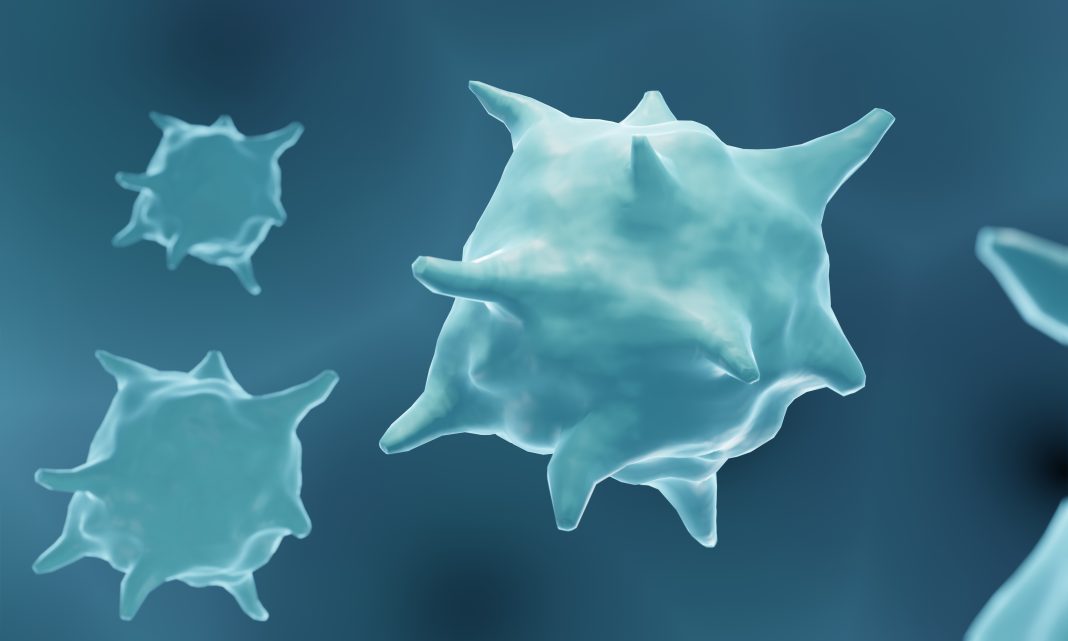A team from Trinity College Dublin says it has developed a new, machine learning-based technique to accurately classify the state of macrophages. Classifying macrophages is important because they can modify their behavior and act as pro- or anti-inflammatory agents in the immune response, according to the researchers.
As a result, the work has a suite of implications for research and has the potential to one day make major societal impact. For example, this new approach could be of use to drug designers looking to create therapies targeting diseases and auto-immune conditions such as diabetes, cancer, and rheumatoid arthritis—all of which are impacted by cellular metabolism and macrophage function.
Because classifying macrophages allows scientists to directly distinguish between macrophage states—based only on their metabolic response under certain conditions–this new information could be used as a diagnosis tool, or to highlight the role of a particular cell type in a disease environment.
The Trinity group’s study “Non-invasive classification of macrophage polarization by 2P-FLIM and machine learning” appears in eLife.
“In this study, we utilize fluorescence lifetime imaging of NAD(P)H-based cellular autofluorescence as a non-invasive modality to classify two contrasting states of human macrophages by proxy of their governing metabolic state. Macrophages derived from human blood-circulating monocytes were polarized using established protocols and metabolically challenged using small molecules to validate their responding metabolic actions in extracellular acidification and oxygen consumption,” write the investigators.
“Large field-of-view images of individual polarized macrophages were obtained using fluorescence lifetime imaging microscopy (FLIM). These were challenged in real time with small-molecule perturbations of metabolism during imaging. We uncovered FLIM parameters that are pronounced under the action of carbonyl cyanide-p-trifluoromethoxyphenylhydrazone (FCCP), which strongly stratifies the phenotype of polarized human macrophages; however, this performance is impacted by donor variability when analyzing the data at a single-cell level.
Form the basis for machine-learning models
“The stratification and parameters emanating from a full field-of-view and single-cell FLIM approach serve as the basis for machine learning models. Applying a random forests model, we identify three strongly governing FLIM parameters, achieving an area under the receiver operating characteristics curve (ROC-AUC) value of 0.944 and out-of-bag (OBB) error rate of 16.67% when classifying human macrophages in a full field-of-view image.
“To conclude, 2P-FLIM with the integration of machine learning models is showed to be a powerful technique for analysis of both human macrophage metabolism and polarization at full FoV and single-cell level.”
“Currently, there are no other methods that employ artificial intelligence-based, machine learning approaches to macrophage classification. A number of different techniques are currently used to classify macrophages, but all of these have significant drawbacks,” said Michael Monaghan, PhD, associate professor in biomedical engineering at Trinity.
“Our method uses a 2-photon fluorescence lifetime imaging microscope (2P-FLIM), which is unique to Trinity and to Ireland. 2P-FLIM does not require sample pre-treatment, can be used to follow changes in metabolism non-invasively and in real-time—which opens the door to tracking disease progression and/or physiological response to therapies—and it also requires a lower number of cells compared with conventional techniques.”
“It is becoming increasingly clear that to solve many of society’s greatest problems, we need to take multi-disciplinary approaches to harness the expertise of people working in different fields,” added Nuno Neto, PhD candidate in the school of engineering.
“Trinity is rightly known as a leader in immunometabolism research, with many of our scientists focusing on how it regulates immune cell response, and how immune cell metabolism is impacted in diseases. This study benefits from that expertise, but also bridges the use of advanced computer science approaches and utilizes an advanced microscope from the biomedical engineering department with a regime never reported previously. It thus serves as a prime example of inter-departmental collaboration in a multidisciplinary field.”







